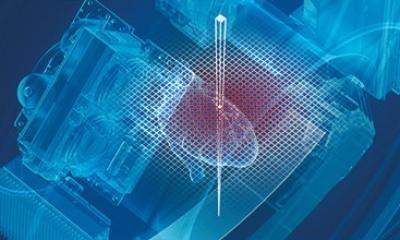Molecular imaging of cancer
by Dr. Ronald Blasberg, Memorial Sloan Kettering Cancer Center, NeuroOncology Laboratory, New York, USA
Molecular-genetic imaging in living organisms has experienced exceptional growth over the past 10 years, and can be defined as „the macroscopic visualization of cellular processes in space and time at the molecular level of function”.
Biomarker or surrogate imaging that reflects endogenous molecular/genetic processes is particularly attractive for expansion and translation into clinical studies in the near-term. This is because existing radiopharmaceuticals and imaging paradigms may be useful for monitoring down-stream changes of specific molecular/genetic pathways in diseases such as cancer (e.g., FDG PET).
Biomarker imaging is very likely to be less specific and more limited with respect to the number of molecular-genetic processes that can be imaged. Nevertheless, it benefits from the use of radiopharmaceuticals that have already been developed and are currently being used in human subjects. This application strategy is most dramatically illustrated by the use of [18F]FDG PET to image the response, recurrence and progression of particular tumors (e.g., Gleevac treatment of GIST). The translation and application of biomarker imaging paradigms into patient studies, using clinically-approved radiopharmaceuticals or contrast agents, will be far easier than either the direct imaging or reporter transgene imaging paradigms.
Reporter gene imaging studies will be more limited in patients compared to that in animals, due to the necessity of transducing the target tissue or cells with specific reporter constructs, or the production of transgenic animals bearing the reporter constructs. Ideal vectors for targeting specific organs or tissue (tumours) do not exist at this time, although this is a very active area of human gene therapy research. Nevertheless, reporter gene imaging particularly the genetic labeling of cells with reporter constructs, has several advantages. There are now three well-defined human genes (hNIS, hNET and hSSTR2) with complimentary, clinically approved, radiopharmaceuticals for PET or gamma camera imaging in patients.
The major factor limiting translation of reporter gene imaging studies to patients is the “transduction requirement”; target tissue or adoptively administered cells must be transduced (usually with viral vectors to achieve high transduction efficiency) with reporter constructs for reporter gene imaging studies. At least two different reporter constructs will be required in most future applications of reporter gene imaging. One will be a “constitutive” reporter that will be used to identify the site, extent and duration of vector delivery and tissue transduction or for identifying the distribution/trafficking, homing/targeting and persistence of adoptively administered cells (the “normalizing” or denominator term). The second one will be an “inducible” reporter that is sensitive to endogenous transcription factors, signaling pathways or protein-protein interactions that monitor the biological activity and function of the transduced cells (the “sensor” or numerator term). The initial application of such double-reporter systems in patients will most likely be performed as part of a gene therapy protocol or an adoptive therapy protocol where the patients own cells are harvested (e.g., lymphocytes, T cells or blood-derived progenitor cells), transduced with the reporter systems and expanded ex vivo, and then adoptively re-administered to the patient. For example, adoptive T cell therapy could provide a venue for imaging T cell trafficking, targeting, activation, proliferation and persistence.
Once in place, Cancer Clinical Trials and Personalized Medicine will be able to benefit from the noninvasive imaging paradigms described above; similar to the benefits of sequential FDG PET scans performed today in order to monitor GIST tumor response and recurrence. The ability to visualize transcriptional and post-transcriptional regulation of endogenous target gene expression, as well as specific intracellular protein-protein interactions in patients will provide the opportunity for new experimental venues in patients. They include the potential to image the malignant phenotype (e.g., signal pathway activity) of an individual patient’s tumor at a molecular level and to monitor changes in the phenotype over time. The potential to image a drug’s effect on a specific target molecule or signal transduction pathway in an individual patient’s tumor provides the opportunity for monitoring treatment response at the molecular level.
16.11.2009











